The paper has been published in the reputable ‘Sustainable Production and Consumption’ Elsevier international journal (Q1, Impact Factor: 8.921). The paper explains and depicts the application of the circular economy business model (CEBM) Canvas that was devised in WP2 for two C-SERVEES products: washing machines and Advanced Link Monitoring (ALM) that led to circular economy actions which were demonstrated in WP4 for both products.
Publication details: Pollard, J, Osmani, M, Grubnic, S, Diaz, A, Grobe, K, Kaba, A, Ünlüer, O, Panchal, R (2023) Implementing a Circular Economy Business Model Canvas in the Electrical and Electronic Manufacturing Sector: A Case Study Approach, Sustainable Production and Consumption, Vol 36, pp. 17-31. DOI: https://doi.org/10.1016/j.spc.2022.12.009
- [External Link]---------------------------------------------------------------
Paving the way for innovative circular economy products and services
[Download]---------------------------------------------------------------
This paper is based on the findings of the C-SERVEES project during its demonstration phase, in which the new Circular Business Models were fully implemented in real environments, involving the whole life cycle, as well as the associated value chains of the four target products: printers, network monitoring, washing machines and TV sets. Life-cycle sustainability assessment methodology was chosen to assess the feasibility of the models and related eco-services, including their impact upon and acceptance by society.
Publication details: Pascal LEROY, Ana Isabel DÍAZ, María ANTA, Bernd KOPACEK, Klaus GROBE, Mohamed OSMANI, Maxime FURKEL, Aybüke KABA, Itziar CARRACEDO, Vicente B. VERT (2022) Activating Circular Services for Electrical and Electronic Equipment – demonstration of Circular Economy Business Models in EEE. In proceedings of the 3rd Symposium on Circular Economy and Sustainability Chania, Greece, June 202.
Available at: LINK
---------------------------------------------------------------
This paper is based on C-SERVEES WP1 deliverables. This research employed seven separate stakeholder questionnaire surveys to encapsulate, interpret and compare the perspectives of electrical and electronic products’ designers, manufacturers, suppliers, retailers, recyclers, business-to-business, and business-to-customer users on factors that drive and hinder the uptake of Circular Economy Business Models in the electrical and electronic sector.
Publication details: Osmani, M, Pollard, J, Forde, J, Cole, C, Grubnic, S, Horne, J, Leroy, P (2021) Circular economy business model opportunities, challenges, and enablers in the electrical and electronic equipment sector: stakeholders’ perspectives. In Proceedings of the 18th International Symposium on Waste Management and Sustainable Landfilling; SARDINIA2021, Sardinia, Italy.
Available at: LINK
- [External Link]---------------------------------------------------------------
This paper, which is based on C-SERVEES WP2 (Task 2.2) and WP4 work, set out to answer how electrical and electronic manufacturers can measure the circular economy performance of their products by developing and testing multidimensional circularity indicators for all products’ life cycle stages.
Publication details: Pollard, J, Osmani, M, Cole, C, Grubnic, S, Colwill, J, Diaz A (2022) Developing and Applying Circularity Indicators for the Electrical and Electronic Sector: A Product Lifecycle Approach, Sustainability, 14(3), 1154. DOI: 10.3390/su14031154.
Available at: https://www.mdpi.com/2071-1050/14/3/1154
- [External Link]---------------------------------------------------------------
The main findings and progress made in the C-SERVEES by September 2019, including results of the consultation of stakeholders, guidelines for implementation of circularity and a circular economic business reference model tailored to the needs of the electrical and electronic sector (REF-CIRCMODE), were presented at ISWA World Congress Bilbao 2019 and published in the conference proceedings. The publication details are: E. Moliner, I. Carracedo (2019) C-SERVEES PROJECT: ACTIVATING CIRCULAR SERVICES IN THE ELECTRICAL AND ELECTRONIC SECTOR,
---------------------------------------------------------------
The findings of C-SERVEES Task 2.1 activities, which address the project’s Objective 1 (Develop Circular Economy Business Models for the E&E Sector), were published in the Journal of Cleaner Production. The publication details are: J. Pollard, M. Osmani, C. Cole, S. Grubnic, J. Colwill (2021) A Circular economy business model innovation process for the electrical and electronic equipment sector, Journal of Cleaner Production, Volume 305, July 2021, DOI: 10.1016/j.jclepro.2021.127211. Available online: https://www.sciencedirect.com/science/article/pii/S095965262101430X
---------------------------------------------------------------
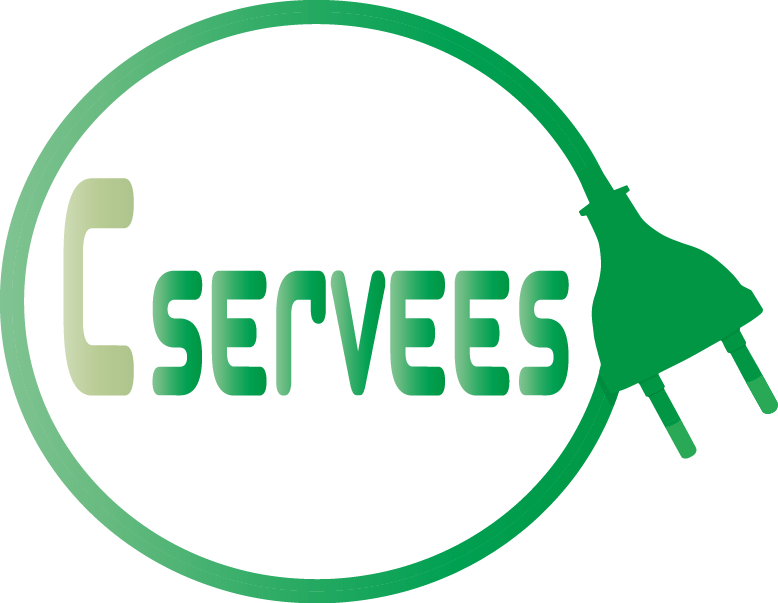
[Download]
---------------------------------------------------------------
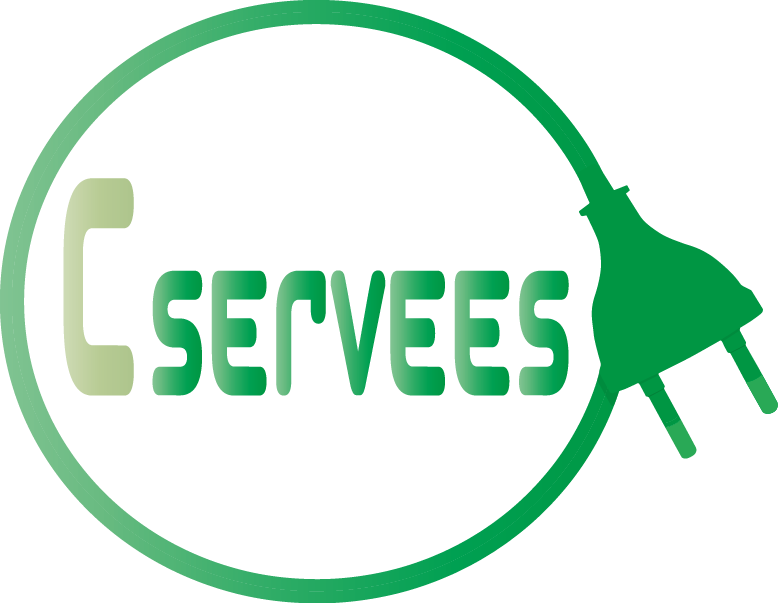
See how we're doing: https://www.youtube.com/watch?v=h4HiVGlG2kQ
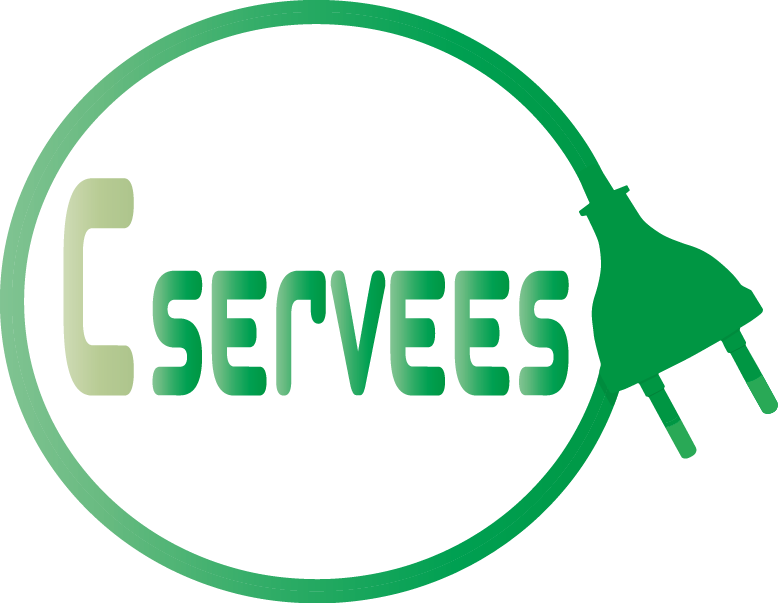
Arçelik, a household appliances manufacturer, is the industry partner for the televisions. C-SERVEES has been an opportunity for Arçelik to look deeper into circularity throughout our value chain. We will now take this knowledge and experience and see how to apply it to a wider range of products.
See how we're doing: https://www.youtube.com/watch?v=h4HiVGlG2kQ
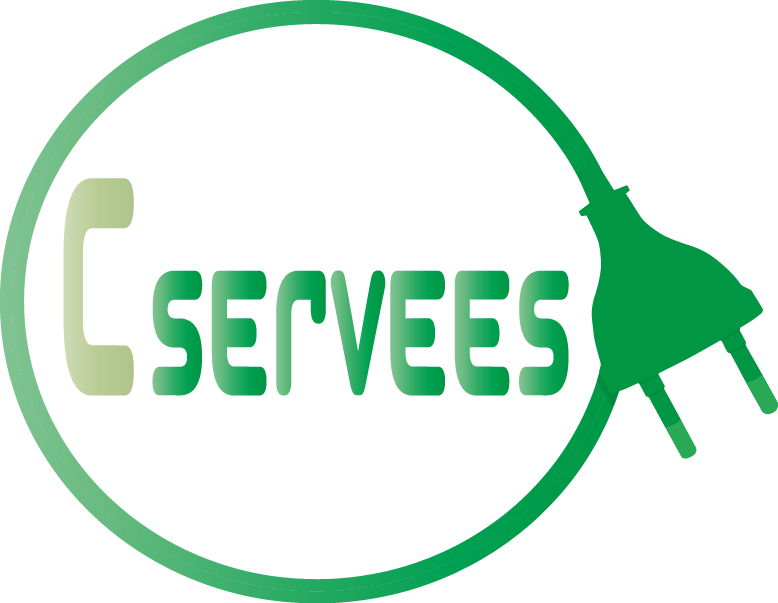
C-SERVEES has taught us that leasing is possible for many of our products and many of our customers. This makes us optimistic that this model has a strong future meaning we maintain control of the products ensuring the repair, refurbishment and recycling opportunities remain in our hands.
See how we're doing: https://youtu.be/qFWcwTuUKOUWe
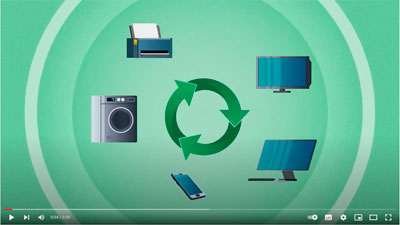
As exclusive manufacturing partner for printers and cartridges, we are helping C-SERVEES make electrical products that that are more easily repaired, refurbished and recycled..
See how we're doing: https://www.youtube.com/watch?v=k-0-liWoKwQ&t=24s
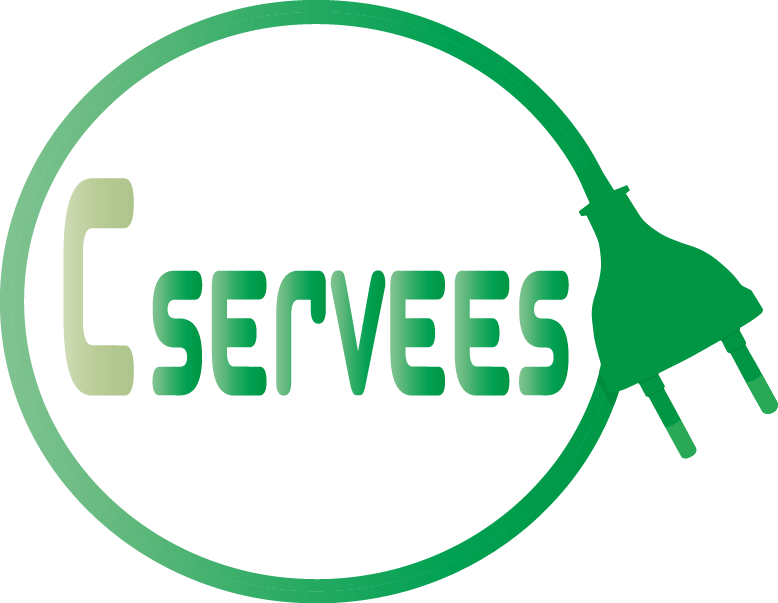
Social, economic and environmental perspectives are evolving toward the development of Circular Economy Business Models. That is strongly related with the costumer purchase preferences and habits, which are changing at the same pace as environmental commitment increases.
The H2020 funded project C-SERVEES has launched this Socio-cultural survey to know about the current social acceptance of the products and services manufacture by the industrial partners. Citizen’s contribution will help to understand public awareness, attitude, and willingness to pay (WTP) for Electronic and Electric Equipment with improved life-cycle sustainability performance.
The survey should take you no more than 5 minutes to complete. We really thank you for your contribution!
 English |
English |  French |
French |  German |
German |  Italian
Italian
 Spanish |
Spanish |  Croatian |
Croatian |  Romanian |
Romanian | 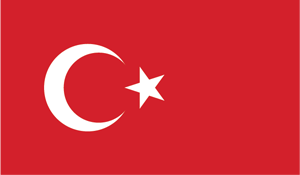 Turkish
Turkish
The C-SERVEES animation has been developed to provide citizens with information on what the project is doing to change the way e-products are developed and consumed and to make them think about new approaches to the purchase and use of electronics.
- [External Link]
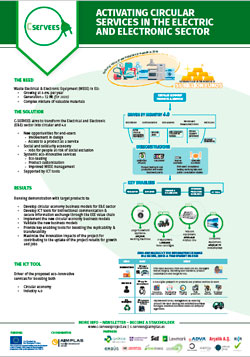
[Download]
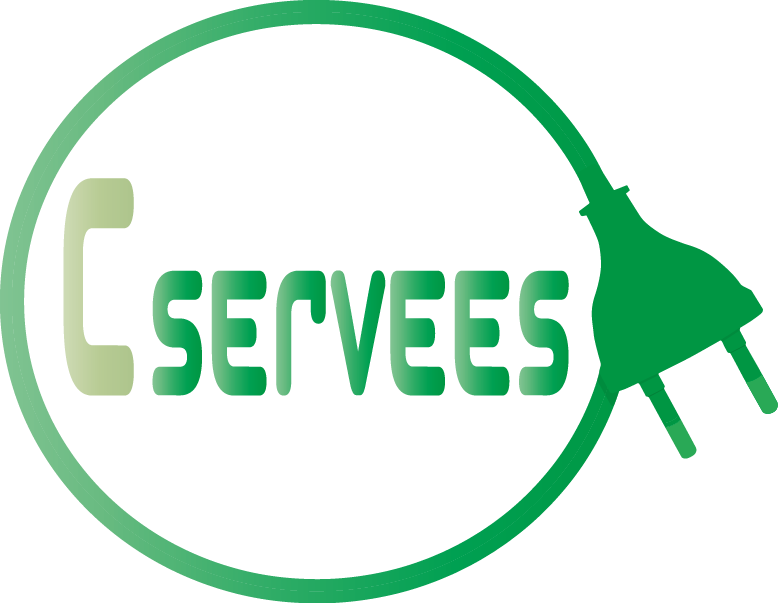
[Download]
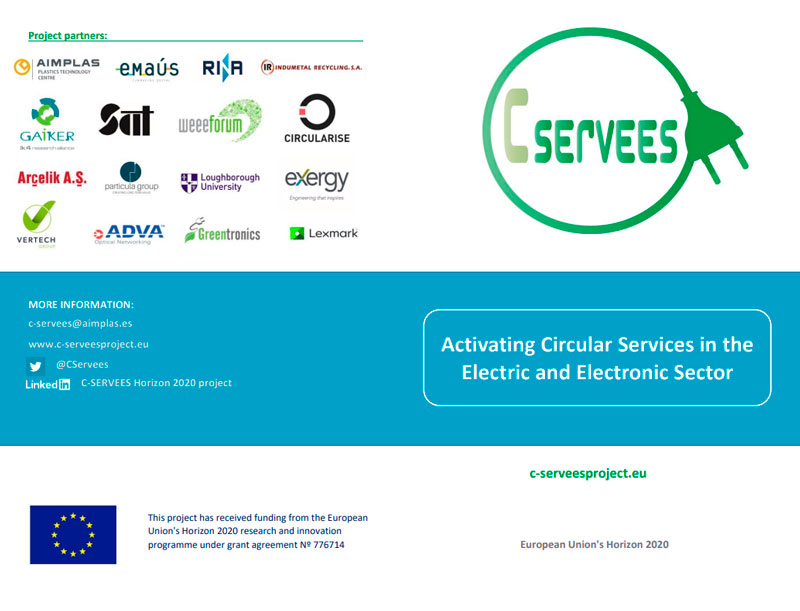
[Download]
WP1 – REQUIREMENTS FOR THE NEW CIRCULAR ECONOMIC MODELS
Objective: to provide guidance for a successful implementation of circularity in the E&E sector based on consultation of stakeholders
D1.1. Survey design and planning (Download)
It will include the surveys, the initial list of stakeholders and a planning of the activities aimed at collecting information.
D1.2. Guidelines for circular economic models in the E&E sector (Download)
It will comprise the analysis and conclusions of the information collected from stakeholders, including the requirements for a successful implementation of circular economic models in the E&E sector and a summary of the activities performed to present preliminary results and conclusions to stakeholders.
WP2 – DEFINITION OF NEW CIRCULAR ECONOMIC BUSINESS MODELS
WP3 – COMMUNICATION CHANNELS AND ICT TOOLS
Objective: to develop ICT tools for bidirectional communication and secure information exchange throughout the EEE value chain to support the successful implementation of the new business models.
D3.8. Report on MVP and compliance & security (Not available yet)
It will report the results of an external audit on the privacy and data security issues related to the ICT platform/tool.
WP4 – DEMONSTRATIONS OF THE CIRCULAR ECONOMIC BUSINESS MODELS AND ECOSERVICES
Objective: to show how new CEBMs and eco-services can be implemented and behave in the E&E sector by running demonstrations with target products.
D4.1. Framework for setting up and running the demonstrations (Download)
The purpose of this deliverable is to establish the baseline for the four demonstrators to be used in the project: washing machine, laser printer (including toner cartridges), ALM (Access Link Monitor) and TV set by describing their features, current business models and current process flowcharts. Methodological support is also developed in the form of evaluation tools to help industrial partners to measure the performance of the circular economy business models (CEBMs) to be developed. To present a better overview of the background concerning CEBMs in the Electric and Electronic (E&E) sector, this deliverable includes also a section describing current Circular Economy practices and initiatives for E&E products belonging to the same categories as the ones chosen for C-SERVEES.
D4.2. Demonstration of design & production phase for target products (Download)
This deliverable reports the outcomes of the design and production phase for the four large demonstrations run in the C-SERVEES project. The demonstrations consist of the implementation and testing of the four new product-specific CEBMs developed within the C-SERVEES project, based on a generic reference CEBM for the E&E sector, the REF-CIRCMODE (Deliverable D2.1). The aim of the demonstrations is to validate the four CEBMs integrating four basic pillars: eco-design, eco-leasing, improved WEEE management, and ICT services. The specific activities to be carried out for each product were selected during the validation process of the product specific CIRCMODEs (Deliverables D2.2, D2.3, D2.4 and D2.5) in accordance with the manufacturer’s priorities and needs. In this document the focus is on the activities aimed to improve the circularity at the design and production phase of the four demonstrators: washing machine, printer and toner cartridges, ALM products and TV set.
D4.3. Demonstration of distribution & use phase for target products (Download)
Completion of the demonstration related to the distribution and use of the target products, resulting in washing machines, printers, ALM products and TVs and their related eco- services tested at customer sites and living lab.
D4.4. Demonstration of endof-life phase for target products (Download)
Completion of the demonstration related to the end-of-life of the target products, resulting in washing machines, printers including toner cartridges, ALM products and TVs and their related eco-services tested at re-use and recycling facilities.
D4.5. Final report on demonstrations of the circular economic business models and eco-services (Download)
It will show the main results and conclusions of the demonstrations conducted for each target product through each life-cycle phase
WP5 – OPTIMIZATION AND VALIDATION OF THE CIRCULAR ECONOMIC BUSINESS MODELS AND ECO-SERVICES
Objective: to validate the new business models by verifying their techno-economic, environmental and social feasibility in demonstrations of the four specific products across their value chains.
D5.1. Results of environmental, economic and social preliminary analyses (Download)
This Deliverable shows the life cycle sustainability assessment of the current scenario for the four products targeted in the project (washing machine, laser printer, telecom equipment and TV set). It includes the environmental, economic and social impacts of each target product, which were calculated using LCA, LCC and S-LCA, respectively. These results will constitute the sustainability baseline against which to compare the improvements implemented and tested in the project to increase the circularity of each product. In a later phase of the project, the impacts of the new C-SERVEES scenario will be assessed and compared to those for the current scenario (compiled herein) in order to calculate the sustainability benefits that can be achieved with the solutions developed in the project.
D5.2. Environmental analysis of C-SERVEES products and services: Life cycle assessment (Download)
Compile the LCA studies, showing the environmental impacts of the new products compared to the conventional ones.
D5.3. Economic analysis of C-SERVEES products and services: Life cycle costing. (Download)
Compile the LCC studies, showing the economic costs and benefits of the new products compared to the conventional ones.
D5.4. Social analysis of CSERVEES products and services: Social life cycle assessment (Download)
Compile the S-LCA studies, showing the social costs and benefits of the new products compared to the conventional ones.
D5.5. Socio-cultural acceptance analysis of C-SERVEES products and services. (Download)
Compile the main findings of the socio-cultural acceptance analysis, including a section related to the sex and gender analysis.
WP6 – KEY ENABLERS FOR REPLICABILITY AND TRANSFERABILITY
Objective: Provide key enabling tools for boosting the replicability and transferability of the new CEBMs and services across the EU.
D6.1. Guidelines for the ecodesign of electrical and electronic equipment (Download)
Define a step-by-step ecodesign procedure for EEE manufacturing companies.
D6.2. Position paper with recommendations for policy makers. (Download)
Consist in a draft regulatory package to boost circular economy in the E&E sector, which will be shared and discussed with policy makers
D6.3. Proposals for standardization of circular economy in the E&E sector. (Download)
Provide a series of recommendations for new material/product standards, which will be shared and discussed with standardization committees.
WP7 – EXPLOITATION OF RESULTS
Objective: to ensure a successful exploitation of the project results, by identifying and addressing business opportunities, target markets and exploitation routes for the developed and demonstrated solutions.
WP8 – COMMUNICATION AND DISSEMINATION OF RESULTS
Objective: to promote a wide acceptability of the project results and engage relevant stakeholders.
D8.1. List of stakeholders and projects (M5) is part of the activities of WP8 “Communication and Dissemination of results”. (Download)
This document identifies relevant stakeholders that will benefit from the project results and can contribute to the different work packages, creating a dynamic project network categorised into Special Interest Groups (SIGs) that will also serve as a KPI of the communication and dissemination activities of the project. It will be updated after month 6 and until the end of the project and made available on the project public website. Furthermore, an Advisory Board with representatives of all stakeholder groups has been created to provide baseline information and feedback on the project progresses.
D8.2. Initial Dissemination & Communication Plan (C&D Plan) is part of the activities of WP8 “Communication and Dissemination of results”. (Download)
This document provides an initial plan outlining the communication and dissemination strategy, including communication objectives and approach, target audience, media channels and tools, messages, activities, materials and KPIs. The progress in executing this Dissemination & Communication Plan will be reported in 3 separate deliverables planned at month 12, 32 and 54.
D8.3. Preliminary Exploitation, Communication & Dissemination plans progress (PEDR) is part of the activities of WP8 “Communication and Dissemination of results” (Download)
This document reports the progresses achieved by month 12 (April 2019) towards the execution of exploitation, dissemination and communication activities, including KPIs. Two more similar progress reports will be published in month 32 and 54.
D8.4. Mid-Term Exploitation, Communication & Dissemination Plans progress (PEDR) is part of the activities of WP8 “Communication and Dissemination of results”. (Download)
This document reports the progresses achieved by month 32 (December 2020) towards the execution of exploitation, dissemination and communication activities. The final progress report will be published at the end of the project.
D8.5. Final version of the PEDR (includes Dissemination & Business Plans final update and results) (Not available yet)
It reports the progresses achieved by the end of the project regarding the execution of exploitation, dissemination and communication activities, including KPIs.
WP9 – PROJECT MANAGEMENT
Objective: successful project coordination and management.
D9.1. Risk identification (Download)
Identification of the main risk indicators for the project development which will be monitored along the project implementation. Updated every 6 months.
WP10 – ETHICS REQUIREMENT
Disclaimer. These deliverables may be subject to final acceptance by the European Commission. The results of these deliverables reflect only the authors’ view and the European Commission is not responsible for any use that may be made of the information it contains.

This project has received funding from the European Union's Horizon 2020 research and innovation programme under grant agreement Nº 776714


